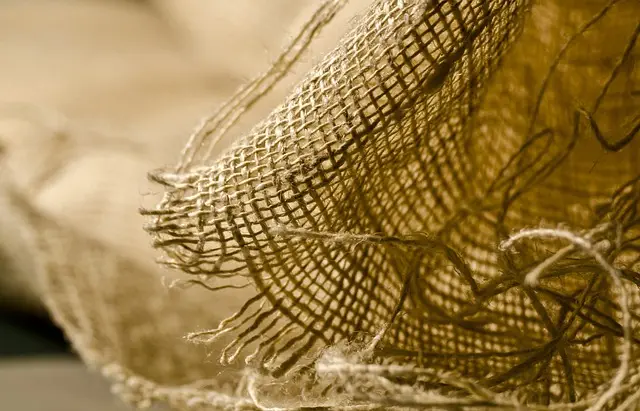Muscle soreness after intense exercise, commonly known as Delayed Onset Muscle Soreness (DOMS), can be mitigated naturally with supplements like Red Bali Kratom and Maeng Da Kratom. Both strains are valued for their analgesic properties; Red Bali Kratom offers a calming effect, which is ideal for relaxation and pain relief post-exercise, while Maeng Da Kratom provides a blend of stimulating and sedative effects, potentially offering a more dynamic recovery experience with an energy boost. These strains interact with opioid receptors to deliver analgesic benefits. It's essential to use kratom responsibly, considering individual variability in response and adhering to legal regulations. For those considering Red Bali Kratom or Maeng Da Kratom for managing DOMS, it's crucial to approach their use with caution and to consult healthcare professionals for personalized advice and safe integration into a wellness routine. Both strains have shown promise in reducing muscle soreness, but the preference between Red Bali's more calming effects or Maeng Da's invigorating yet soothing properties will depend on individual needs and exercise recovery goals.
Muscle soreness can be a persistent challenge for athletes, fitness enthusiasts, and anyone engaging in physical activities. Whether it’s from an intense workout session or daily exertion, the discomfort can hinder progress and affect overall well-being. In recent times, kratom supplements have emerged as a potential natural remedy for alleviating muscle soreness. This article delves into the effectiveness of kratom, particularly comparing Red Bali Kratom vs Maeng Da Kratom, in providing relief from muscle pain. We will explore the scientific underpinnings of muscle soreness, the active compounds in kratom that may contribute to its pain-relieving properties, and how these two strains compare in their efficacy for muscle recovery. Additionally, we’ll discuss practical advice on optimizing your kratom use, integrating it with other supplements and therapies, and maintaining a holistic approach to exercise and diet for comprehensive muscle care. Join us as we navigate the potential of kratom in the realm of muscle soreness relief.
- Understanding Muscle Soreness and the Role of Kratom Supplements
- – The Science Behind Muscle Soreness (DOMS)
Understanding Muscle Soreness and the Role of Kratom Supplements

Muscle soreness, often experienced as delayed onset muscle soreness (DOMS) following intense exercise or physical activity, can be a significant impediment to consistent training and athletic performance. This type of soreness typically occurs 24 to 72 hours post-exercise due to microtrauma from eccentric contractions or the accumulation of metabolic byproducts within muscle cells. Understanding the mechanisms behind muscle soreness is crucial for effectively managing and alleviating its effects, which can interfere with an individual’s ability to maintain a rigorous fitness regimen.
Kratom supplements have emerged as a potential aid in managing post-exercise muscle soreness. Derived from the leaves of Mitragyna speciosa trees, kratom contains alkaloids that may interact with opioid receptors in the brain, offering pain relief properties. Two particularly potent strains of kratom are Red Bali and Maeng Da. Red Bali Kratom is known for its relaxing and analgesic effects, which can help soothe muscle aches and promote recovery. On the other hand, Maeng Da Kratom is renowned for its balanced blend of stimulating and sedative properties, making it effective in managing pain while also enhancing mood and energy levels. Both strains have been used traditionally to alleviate pain, with Red Bali providing a more calming experience and Maeng Da offering a more invigorating one. When considering kratom for muscle soreness relief, it’s important to use it responsibly, adhering to the recommended dosages and in compliance with local laws and regulations. Proper hydration, rest, and a balanced diet complement the use of kratom supplements to ensure optimal muscle recovery and overall well-being.

Muscle soreness can be a significant hindrance to an active lifestyle, often resulting from intense physical activities or strenuous workouts. Individuals seeking natural remedies for muscle pain relief may turn to kratom supplements, which have gained popularity for their potential analgesic effects. Among the various strains of kratom, Red Bali Kratom and Maeng Da Kratom are two prominent options that are often compared due to their potent properties.
Red Bali Kratom is renowned for its balancing effects, providing both stimulating and soothing sensations. It contains alkaloids like 7-hydroxmitragynine and mitragynine, which are thought to contribute to its pain-relieving qualities. Users report that Red Bali can effectively ease muscle aches and discomfort, making it an excellent choice for those looking to manage post-exercise soreness. On the other hand, Maeng Da Kratom is celebrated for its robust alkaloid content, which may offer even more intense pain relief. This strain is known for its high concentration of mitraphylline, a unique alkaloid that can amplify its analgesic effects. Both strains have their advocates, and the choice between Red Bali Kratom and Maeng Da Kratom often comes down to personal preference and the desired intensity of pain relief. It is important for individuals to consult with healthcare professionals before incorporating kratom into their wellness regimen, as individual responses to these supplements can vary greatly.
– The Science Behind Muscle Soreness (DOMS)

Muscle soreness, commonly known as Delayed Onset Muscle Soreness (DOMS), is a condition that typically occurs following intense exercise or physical activity that your body isn’t accustomed to. The science behind DOMS involves microtrauma within the muscle fibers, leading to an inflammatory response and subsequent swelling and pain. This reaction is a natural consequence of the mechanical and metabolic stress placed upon muscles during unaccustomed or strenuous exercise. The severity of DOMS can vary widely among individuals, depending on factors such as fitness level, muscle condition, and nutritional status.
In recent times, there has been growing interest in natural supplements like kratom for managing post-exercise muscle soreness. Two popular strains of kratom, Red Bali and Maeng Da, are often compared for their efficacy in alleviating pain and promoting recovery. Both strains contain alkaloids that may interact with the opioid receptors in the body, potentially providing analgesic effects. Red Bali Kratom is known for its relaxing properties and has been traditionally used to ease discomfort and promote a sense of well-being. On the other hand, Maeng Da Kratom is renowned for its balanced mix of stimulating and relaxing effects, which might aid in pain management while also offering an energizing lift. Users often report that these strains can significantly reduce muscle soreness after intense physical activity, potentially due to their anti-inflammatory and analgesic properties. However, it is crucial to approach the use of kratom with caution, as its effects can vary greatly among individuals and can be influenced by dosage and personal tolerance levels. Users should also be aware of the legal status of kratom in their jurisdiction before considering its use for muscle soreness relief.
Muscle soreness can be a significant hindrance to those who engage in physical activities, from daily workouts to strenuous labor. The article has explored the mechanisms behind muscle soreness, commonly known as DOMS, and how kratom supplements may offer relief. Both red Bali and maeng da kratom have been discussed for their potential benefits in managing post-exercise discomfort. Red Bali kratom is often celebrated for its calming and analgesic properties, which might help soothe aching muscles, while maeng da kratom is recognized for its invigorating effects that could assist in maintaining focus and motivation during recovery periods. Ultimately, the choice between these potent supplements should be made with personal tolerance, desired effects, and proper dosage in mind. It’s always advisable to consult with a healthcare provider before integrating kratom into any wellness regimen, especially considering its legal status varies by region. With an informed approach and professional guidance, kratom can serve as a valuable adjunct to muscle soreness relief strategies for those seeking natural alternatives.






